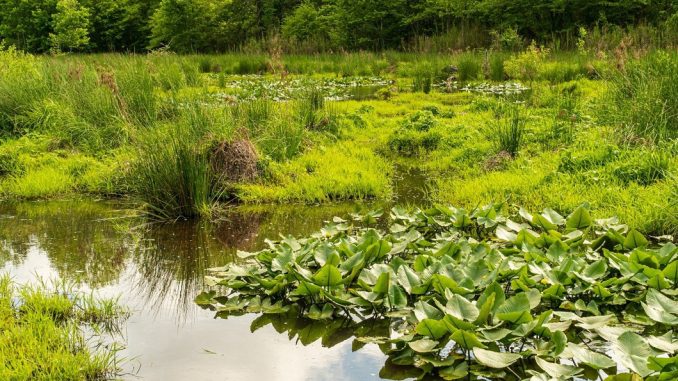
$6.5 billion is a lot of money. Imagine what a town or city could do if it suddenly found a way to save that amount, say by protecting and developing wetlands to provide clean water supplies rather than building new wastewater treatment plants?
It was a discovery that New York City made not so long ago. New York is a big place and its residents and visitors get through their fair share of water. To increase supplies, the city looked at constructing several new treatment plants which would purify wastewater before returning it to the public supply network to be consumed by humans.
The cost of these new treatment plants – depending on how many New York decided to build – was estimated at between $3 billion and $8 billion. Then an alternative idea was put forward. The city could instead purchase land around its reservoirs upstate and turn it into wetlands.
These wetlands would allow Mother Nature to get on with the job of purifying the water just as effectively as anything manmade could do, and the purchase of the necessary land would cost $1.5 billion, saving the New York $6.5 billion compared to the highest estimate for the new wastewater treatment plants.
Wetlands help to manage the purification of water on behalf of the planet. They act as filters, cleaning up water in several ways. Plants remove nutrients from the water and sediments help to trap pollutants such as phosphorous, heavy metals and toxins.
These heavy metals are also incorporated into peat as it forms, as is nitrogen. Further nitrogen is removed from water supplies by wetlands transforming it into harmless levels of nitrogen gas.
The New York City idea of using wetlands to provide clean water supplies by purifying it whilst in a reservoir is one which the United Kingdom could learn from.
There are approximately 570 reservoirs in the UK today and the process of treating the water within them before it enters the pipes which deliver it to our homes and places of work could feasibly be aided by wetlands in the future.
Not only would developing new wetlands around reservoirs be good for water management and potentially save money on wastewater treatment in the long term, but it would also be excellent news for the environment as wetlands play a huge role in the ecological health of the country.
The importance of wetlands has not always been realised. In the not-too-distant past, they were often seen as unproductive pieces of land which offered nothing.
Their only value was thought to be once they had been drained and built on, providing you could find a developer willing to undertake what was often a more complex construction project because of the issues that come from building on unstable ground.
What impact building on wetlands has is now been keenly felt. Wetlands play a crucial role in flood management, so building on them increases the prospects of flooding happen.
Destroying nature’s means of lessening the damage caused by floods at a time when extreme weather events are becoming more commonplace due to climate change is a dangerous mix.
Since the Industrial Revolution, wetlands have been devoured at an alarming rate. According to an Environment Agency report in 2016, there are now 90 percent less wetlands in the UK than there were in Roman times.
England’s wetlands are internationally recognised for their importance to both native and migrant birds. All wetlands in the UK are home to a biodiverse range of plant and animal life which needs to be protected first and foremost. If we can then use these wetlands to our advantage for water treatment and carbon capture and storage, then even better.

Leave a Reply